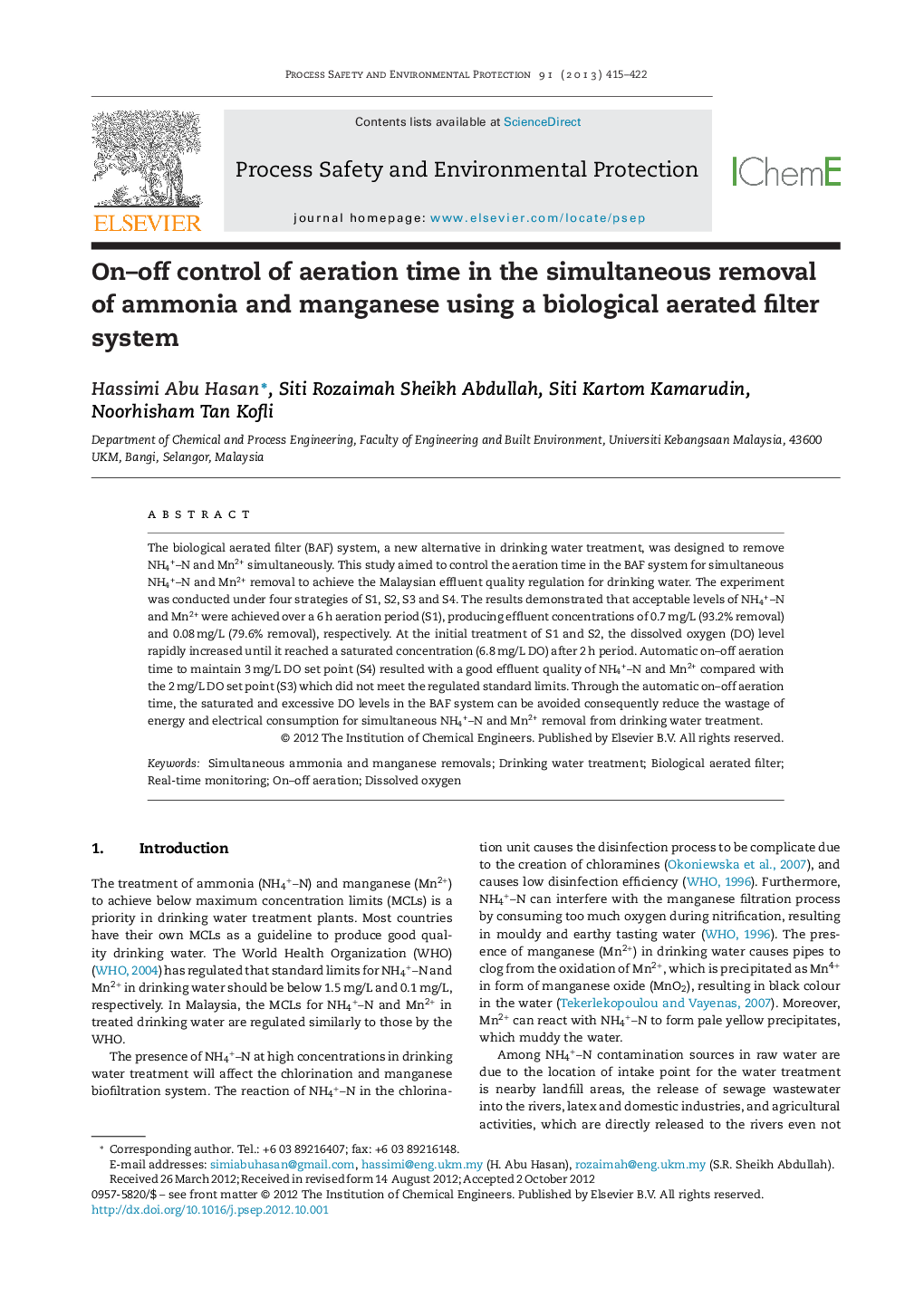| Article ID | Journal | Published Year | Pages | File Type |
|---|---|---|---|---|
| 588381 | Process Safety and Environmental Protection | 2013 | 8 Pages |
The biological aerated filter (BAF) system, a new alternative in drinking water treatment, was designed to remove NH4+–N and Mn2+ simultaneously. This study aimed to control the aeration time in the BAF system for simultaneous NH4+–N and Mn2+ removal to achieve the Malaysian effluent quality regulation for drinking water. The experiment was conducted under four strategies of S1, S2, S3 and S4. The results demonstrated that acceptable levels of NH4+–N and Mn2+ were achieved over a 6 h aeration period (S1), producing effluent concentrations of 0.7 mg/L (93.2% removal) and 0.08 mg/L (79.6% removal), respectively. At the initial treatment of S1 and S2, the dissolved oxygen (DO) level rapidly increased until it reached a saturated concentration (6.8 mg/L DO) after 2 h period. Automatic on–off aeration time to maintain 3 mg/L DO set point (S4) resulted with a good effluent quality of NH4+–N and Mn2+ compared with the 2 mg/L DO set point (S3) which did not meet the regulated standard limits. Through the automatic on–off aeration time, the saturated and excessive DO levels in the BAF system can be avoided consequently reduce the wastage of energy and electrical consumption for simultaneous NH4+–N and Mn2+ removal from drinking water treatment.
► Aeration time controls for the simultaneous NH4+–N and Mn2+ removal from drinking water treatment. ► Simultaneous NH4+–N and Mn2+ removal was achieved at 6 hours aeration time at 3 mg/L DO. ► DO set point (DOsp) could prevent the excessive aeration during simultaneous NH4+–N and Mn2+ removal. ► Simultaneous NH4+–N and Mn2+ was removed to below standard limits for treated drinking water.
